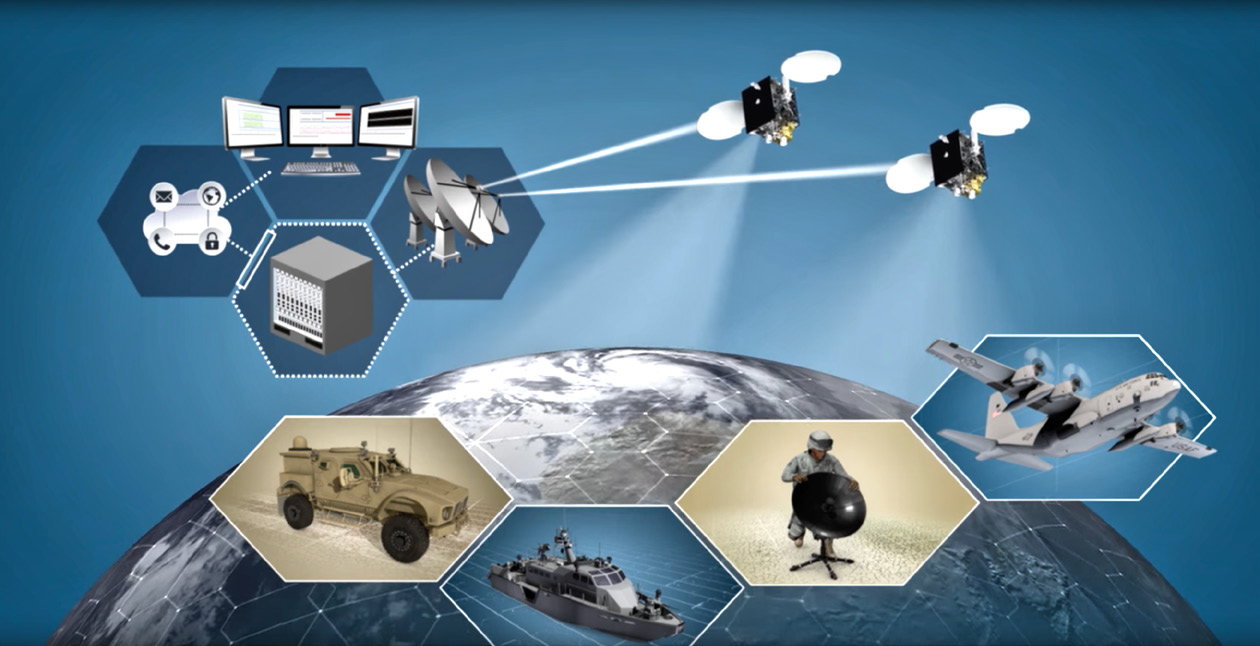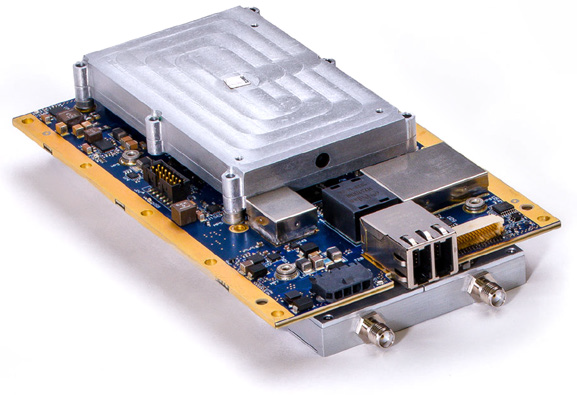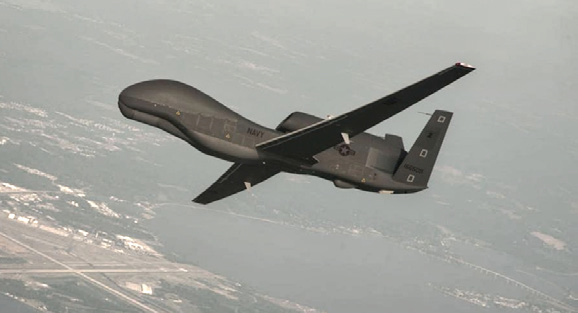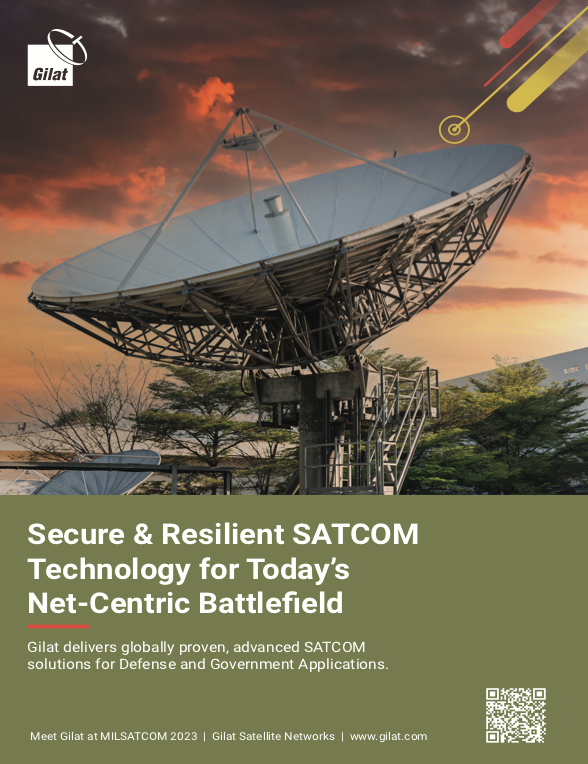Tim Winter is the President of iDirect Government, and he oversees the corporate strategy and leads the company to bring solutions to the MILSATCOM) arena.

Winter brings more than 20 years of experience in the SATCOM arena. Prior to joining iDirect Government, Winter served as Vice President of Global Accounts and Global Government and Defense at parent company, ST Engineering iDirect. Winter managed all strategic global account engagements and capture pursuits for International Defense opportunities.
Previously, he managed the satellite networks division at L-3 Communications, where he led all sales and business development efforts for managed satellite communication, data networks and operational field services.
Winter served in the U.S. Navy and flew P-3 Orion aircraft as a Naval flight officer on active duty for eight years. He continued his service in the United States Navy Reserves, flying P-3 aircraft and the BAMS-D UAV through 2022. He recently retired from the U.S. Navy with the rank of commander.
He has a Masters’ degree in business administration from Georgetown University, Washington, DC, and a Bachelor of Science degree as a Trident Scholar from the United States Naval Academy, Annapolis, Maryland. He is chairman of the board for the Minerallac Company.
Good day, Mr. Winter. As the new president for iDirect Government this year, what is your vision for iDirectGov moving forward and what is the roadmap for the company?

Tim Winter
First and foremost, we continue to be focused on being the best SATCOM ground service provider and partner to the U.S. government, agencies and Allies. This will be achieved through roadmap execution bringing forth the most resilient and dynamic ground ecosystem — one that embraces multilayered security with Transmission Security (TRANSEC), Federal Information Processing Standards (FIPS), Communication Signal Interference Removal (CSIR™) and future developments, and one that provides an unparalleled multi-orbit/multi-waveform/multi- mission capability to the end-user.
Internally, we will continue to have a “second to none” culture that promotes personal and professional growth for our employees and provides outstanding solutions and service to our customers.
We are proud of all our employees and salute our military veterans, who comprise one-third of our team.
No one knows better what our troops need to accomplish mission success than those who have served. Our veteran team members bring valuable first-hand, real-world experience to the engineering table. They contribute to the integrity and features of our solutions for the warfighter.
Thank you for your service to the nation in your flight and command positions with the United States Navy. Speaking of your military service and the foundation such cemented into place for your career, was the transition from the Navy to your career, was the transition from the Navy the commercial front difficult to accomplish?
Tim Winter
It was an honor to serve in the United States Navy where I flew P-3 Orion aircraft as a Naval Flight Officer on active duty for eight years and retired as commander out of the Navy Reserves with more than 27 years of service. In the Navy, I flew P-3 aircraft and the BAMS-D UAV through 2022.
The transition from the Navy to the “commercial world” certainly comes with some challenges. That being said, success in both arenas is built on similar foundational elements.
Accountability, integrity, leadership, teamwork and empathy are just some of the common characteristics that can drive group and individual successes in the armed services as well as in commercial activities.

Additionally, mentors — those who have gone before through the transition process — are usually ample and incredibly helpful throughout the process. Really, the hardest part can be figuring out what to wear every day without having a uniform!
How is developing defense communications solutions different from commercial products?
Tim Winter
Security and resiliency must be THE priorities in defense communications. Defense-based networks must work in contested environments and when “the shooting starts.”
A ground SATCOM solution must be designed and developed with resiliency in mind. These capabilities must be at the core of the platform.
Such platforms must provide critical secure connectivity to those deployed by land, at sea and in the air for reliable anytime and anywhere communications in the field.
Commercial platforms usually provide initial building blocks and foundational technical elements to the ultimate design of such platforms. Cost efficiency, dynamic bandwidth allocation, virtualization, orchestration and cloud native capabilities will all be qualifying criteria for next-generation platforms.
These criteria must be coupled with capabilities that provide enhanced security and resiliency to meet the needs, requirements and demands of the warfighter. Additionally, interoperability will be very important to MILSATCOM networks in the future. The end-user desire to use multiple space assets and constellations — to include both government assets and commercial — is here to stay and will be a requirement going forward.
Interoperability between orbits to include “orbit zero” (terrestrial) and 5G integration will also be desired. Interoperability is also important to the multi-national community. Most forces will operate as part of coalitions or joint efforts in the future. Agreed upon standards, security regimes and common architecture will all be important in our efforts with our Allies in the days to come.
What will iDirectGov’s next-gen product portfolio resemble?
Tim Winter
Our next-gen platform will bring forth advanced capabilities to provide end-users with the most secure and resilient solution to their SATCOM needs and requirements. It will allow operational and deployed flexibility by being “cloud native” and deliver support for multi-mission, multi-waveform and multi-orbit needs, all within a multi-layered, secure and resilient environment.
The platform will provide an easy and seamless migration path from our current Evolution Defense offering and interoperability with the largest Velocity- based commercial networks in the world.

This will allow for operational continuity and capital protection for the end-user. Bridge elements will include the 450 Software-Defined Radio (SDR) and a next- generation NMS, which will be the key to the migration to our new resilient REVOLUTION ecosystem.
Cybersecurity is of great concern to government agencies and all military fields of endeavor… what role does iDirectGov play in suppressing hostile threats to these agencies and organizations? What advice can you offer to commanders and organization leaders regarding their roles with these substantial challenges?
Tim Winter
Cybersecurity challenges are real, complex and often asymmetrical. The ability to prevent such cyber- attacks should be pursued by all those in leadership positions at agencies, government organizations and the military. All the tools and capabilities offered to the warfighter today must work in contested and cyber- challenged environments.
The security of the networks — data, command and control, and voice — must be prioritized, not only in operation, but at the time of design.
iDirect Government provides multi-layered secure communication solutions to include TRANSEC and CSIR (signal interference mitigation) that aid in the defense of communication networks.
Probably my best piece of advice is to have a focus toward security and cyber defense at the time of communications system design — hardware and software. It is often too hard to implement these capabilities after system design and build.
What are some of the challenges and opportunities for MILSATCOM in today’s environment, and what role will MILSATCOM play in the battlefield?
Tim Winter
MILSATCOM challenges include security, standards- based interoperability and enabling a single ground platform to provide a multi-mission and multi-constellation (orbit, space asset, etc.) capability.
 iDirectGov’s 450 SDR.
iDirectGov’s 450 SDR.
The opportunities include technology advances that will allow for flexible deployments of ground systems (cloud and on-premise, etc.). Standards and interoperability advances will allow for easier use of multi-orbit and multi- constellations, etc. New orbit/constellation offerings will allow for mission-specific “best available” and “most resilient” SATCOM networks.
What are some trends you see in MILSATCOM now and in the future?
Tim Winter
MILSATCOM trends include the acceleration of development and commercial offerings (Starlink, etc.) pushing the pace of development. There exists a need for interoperability across orbits and constellations and a need for interoperability across MILSATCOM assets and commercial solutions. MILSATCOM networks should be designed with a consideration to both commercial and military constellations.
The need for resilient solutions is a continuing — and strengthening — trend. If networks do not work in contested environments, then the industry has failed. The industry must stay ahead of the adversaries regarding security and resiliency.

BAMS-D UAV, photo courtesy of U.S. Navy.
As you review your successful career, what projects truly bring a sense of satisfaction to you?
Tim Winter
Obviously, my service as a naval aviator in the United States Navy and the greatest fighting force in the world will always be incredibly important to me — and it played a pivotal role in who I am. The idea of service has carried through all my positions outside of the Navy, allowing me to keep the people I work with — both employees and customers — as my priority.
This military service has been the foundation for
everything that I have accomplished in my career following my time in the Navy.
I thrive on doing amazing things with great people — and sometimes doing things that you didn’t think could be done. True success is only special when it is shared. This is why I advocate that service goes beyond career. I believe in supporting charities not only with monetary funds but with volunteer work— getting your hands in the action. I am proud of the many iDirect Government- supported philanthropic participation events, including Wreaths Across America, Association of the United States Army’s Fisher House and Patriot Foundation, to name a few.
With MILSATCOM so crucial to the nation’s and our Allies’ national defense missions, how do you see Artificial Intelligence (AI) that you mentioned in the upcoming technology forefront answer playing a role in for military missions?
Is the possibility of AI influencing the projection of power of concern to you? How can AI be cautiously used within MILSATCOM to the benefit of warfighters?
Tim Winter
AI and Machine Learning (ML) are going to be extremely important to the warfighter in the days to come. Specifically, regarding SATCOM, AI and ML can allow for networks to be more dynamic and fit for mission. Whether these missions incorporate real-time bandwidth allocation, most resilient routing or auto-hopping from space asset to space asset or orbit to orbit, these satellite technology exchanges could all be influenced and automated by AI.
AI may lend itself to very dynamic security response regimes to bad actors. Systems could “learn” how an adversary is hacking or interfering with a particular network and respond accordingly and potentially in real time.
However, as noted, AI and ML will be tools deployed by adversaries as well. Security and resiliency are important today, and they will be even more so going forward. The capabilities of AI and ML are great, but they will be equally met by the many associated risks — both known and unknown.
How does iDirectGov view the Remote Piloted Aircraft (RPA)/Unmanned Aircraft Vehicle (UAV)/HAPS (High-Altitude Platform Station) products within the MAG world, and does the firm have any plans to support these technologies? If so, how?
Tim Winter
RPA/UAV/HAPS provide an incredible capability to many at a very reasonable ROI. Whether it is long dwell ISR, comms relay or those that are involved in the kill chain, unmanned aerial assets are very effective. However, all that they do rely on secure and redundant communication links. These links — whether they are for takeoff and landing and line of sight or for data transmittal and beyond line of sight — are vital to the ability of these assets to perform their mission requirements.
iDirect Government offers communications suite hardware and software to enable these platforms and their associated SATCOM links while providing leading anti-jam and anti-interference capabilities to ensure their operation. iDirect Government stands ready to support all these platforms and users in the growing RPA/UAV/ HAPS market.
What is your personal outlook for MILSATCOM in 2024? What technologies do you believe will come to the forefront in 2024?
Tim Winter
I am bullish on all things SATCOM for 2024. It continues to be a very exciting and vibrant time in our industry. Multi- orbit, dynamic capabilities to support advanced mobility requirements and operational efficiencies will continue to be developed by the industry to provide the warfighter with advanced interoperable solutions. However, a robust approach to resiliency and security will continue to be “center stage” and a “must have” for all next-gen platforms and ecosystems.
I think we will see advanced AJ/AI/LPI/LPX resilient and secure solutions to continue to come to the forefront in 2024. These are absolute musts for the warfighter and are required to ensure survivability of SATCOM networks in the field. iDirectGov continues to work on the most advanced resilient SATCOM capabilities and looks forward to bringing them to the warfighter in the very near-term future.
www.idirectgov.com



